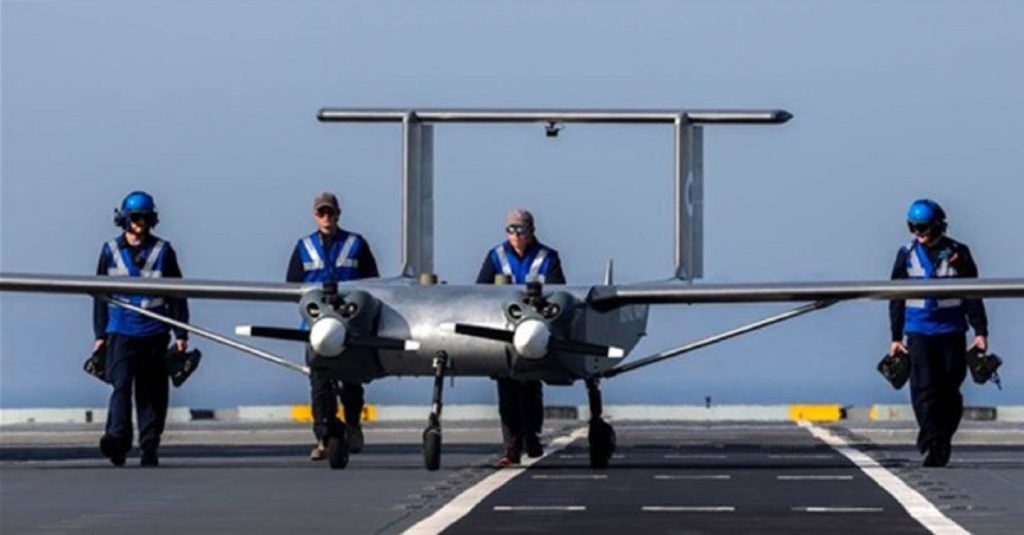An Unmanned Aerial System (UAS) successfully flew from Lizard Peninsula to the Queen Elizabeth-class aircraft carrier, HMS Prince of Wales off the Cornish coast, then flew back to the mainland.
This flight is a vital step along the way to operating crewless aircraft safely alongside F-35 Lightning II jets and naval Merlin and Wildcat helicopters, which are currently the backbone of the fleet. The journey marks a milestone that the UK Royal Navy claims “points the way to the future of naval aviation.”
The goal is to deploy UASs with a UK Carrier Strike Group in the future, using them to transfer stores and supplies – such as mail or spare parts – between ships, without the need to launch helicopters.
UASs are cheaper to operate, eliminate any potential risk to aircrew – such as in bad weather – and keep the high-tech Merlins and Wildcats free for operational sorties, such as hunting hostile submarines or surface vessels which are threats to the Carrier Strike Group.
The Royal Navy experimented with drone technology before on the Prince of Wales – small quadcopters and Banshee targets (small jets launched by catapult and parachutes down to land when the mission is complete). The trials off the Lizard are in a different league, involving a much larger (ten-metre wingspan), more capable pilotless aircraft.
UAS onboard HMS Prince of Wales
Southampton-based W Autonomous Systems, a British company that provides long-range, heavy-lift autonomous drones for defence, manufactured this particular UAS for the Royal Navy.
The system’s HCMC twin-engine light alloy twin boom aircraft can carry a payload of 100kg up to 1,000 kilometres (620 miles). Crucially it can land on uneven ground and needs a runway just 150 metres long – a little over half the length of the flight decks on the UK’s Queen Elizabeth-class aircraft carriers – to land or take off.
“HMS Prince of Wales is a fifth-generation aircraft carrier and operating autonomous drones like this will become the norm across future Royal Navy Carrier Strike Groups in our 50-year lifespan,” the Commanding Officer for HMS Prince of Wales Captain Richard Hewitt stated.
“We are all proud… to achieve this – a fantastic milestone for all involved and the first of many firsts on this deployment to shape the future of Royal Naval Carrier Strike innovation as we prepare for our strike group deployment in 2025,” Hewitt added.
Forming a fifth-generation Carrier Strike Group
HMS Prince of Wales departed its home base at Portsmouth on the 1 September, heading for the United States to embark F-35B stealth fighters for the final phase of pushing the boundaries of the UK’s fifth-generation jets’ operating limits from the carrier.
Pushing the boundaries will see more advanced take-off and landing techniques tested, allowing the F-35s to return to the carrier faster and heavier (for example, with more fuel and weapons aboard) which cuts the time between sorties, allowing the ship to launch more strike missions, much faster.
Besides UAS and combat jets, the carrier’s stint on the eastern seaboard will conclude by expanding the US Marine Corps’ unique tilt-rotor MV-22 Ospreys operating limits.
The Ospreys transport troops and kit into battle. Expanding the ship’s operating limits for all these aircraft over the deployment will allow even greater capacity for joint operations in the future, culminating in HMS Prince of Wales’ global deployment in 2025.









